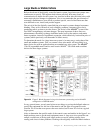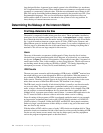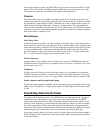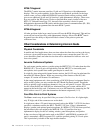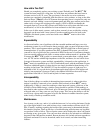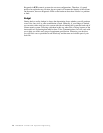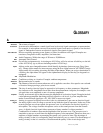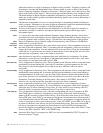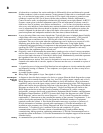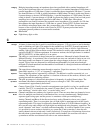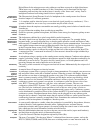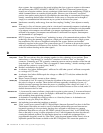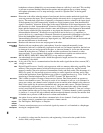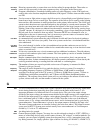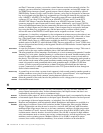
Glossary131
B
Balanced line
A balanced two conductor line carries audio that is differentially driven and balanced to ground.
Neither conductor is tied to circuit common. Circuit common is either tied to a transformer center
tap, or is an electrical center point, or not tied at all. The signal (with respect to ground) on one
conductor is equal and 180° out of phase with the other conductor. Balance Adjustment or
Control In stereo audio, an adjustment to balance the left channel versus right channel. At RTS™
Systems a name given to the null adjustment control. The null adjustment or balance control is
used in two lines of products: user stations and interfaces — two to four-wire interfaces and two-
wire to two-wire interfaces. In the headset user stations the balance control (called sidetone in this
case) is adjusted until the side tone heard in a headset is optimum. In a speaker user station, the
control is adjusted for the best null so that a full duplex conversation can be held with both the
panel microphone and loudspeaker enabled at the same time (without feedback).
Bathtub Curve
A curve showing failure rate versus elapsed time. Typically this curve is bathtub shaped. Initially
a high failure rate occurs when active and passive parts fail (“infant mortality”). The parts fail
under initial turn-on and burn-in stress. The flat part of the curve is the normal life of the
equipment. The curve rises again when the equipment ages and is in the wear-out part of its life.
Inspecting parts before they are used reduces the initial failure rate. Using higher quality
components and proper derating of components in the equipment design, lengthens the equipment
operating life. RTS™ Systems burns-in power supplies and other equipment to catch early
failures before the equipment goes to the end user.
Bel
Originally a unit of measurement that meant that a sound was twice as loud. A more convenient
unit for other reasons is a decibel, which is a tenth of a bel. Therefore an increase of 10 decibels is
twice as loud (and a decrease of 10 decibels is half as loud). Mathematically a unit that represents
the logarithm of the ratio of two powers. See also decibel.
Beltpack
Portable headset user station. This station is designed to be worn on a user’s belt, but is also
fastened to the underside of consoles, taped to a structure near the user, or mounted on a piece of
equipment.
Binaural
1. A special process of using an artificial head and two microphones to closely emulate the spatial
and frequency hearing of a human. 2. Two earphones, two signals, may be stereo or may be two
different signals.
Biscuit
A portable speaker station.
Bit
Binary Digit. One eighth of a byte. One eighth of a dollar.
Block Diagram /
Single Line
Diagram
A diagram to show the basic concepts of a device or system. Often the block diagram has system
parameters such as transfer functions, gain, loss, level, DC voltage, inputs, outputs, and so on. I.)
Block Diagrams are used on the Product Data Sheet to clarify the functions, show performance
capabilities, and to show the input, output, control, and interconnection points. This diagram also
defines and clarifies the specifications called out on the data sheet. II.) The diagrams called Block
Diagrams are often, in fact, “Single Line Diagrams”. Single Line Diagrams are similar to the
Block Diagrams but show more detail such as number of conductors in a cable, connector
designations, connector details such as male/female, Equipment Model Numbers, and Equipment
Designation Names/Numbers. At RTS™ Systems, these single line diagrams are called “System
Block Diagrams” and are used for several purposes: 1. Act as a check list against the customer
requirements. 2. Demonstrate to the customer the meeting of the customer’s requirements. 3. Are
used to develop the equipment list (Lists the Quantities and Models numbers of equipment
required to make the system). 4. Provide the information necessary to perform a system test. 5.
Provide information to estimate wire and cable requirements. 6. Provide information to aid
installation at the customer site. (Wiring Diagrams and Wire List can be generated from this
information). 7. Graphically give a measure of the size and complexity of a given
communications system. 8. Provide a means of troubleshooting system problems during
commissioning, during operation, and during maintenance. 9. Provide a documentation basis to
expand the system in the future. 10. Provide documentation for telephone support of the customer
from the factory.
Blocking
A communication system blocks a requested call or access usually by a busy signal.



